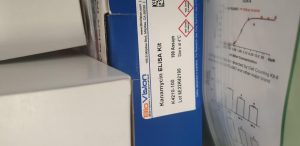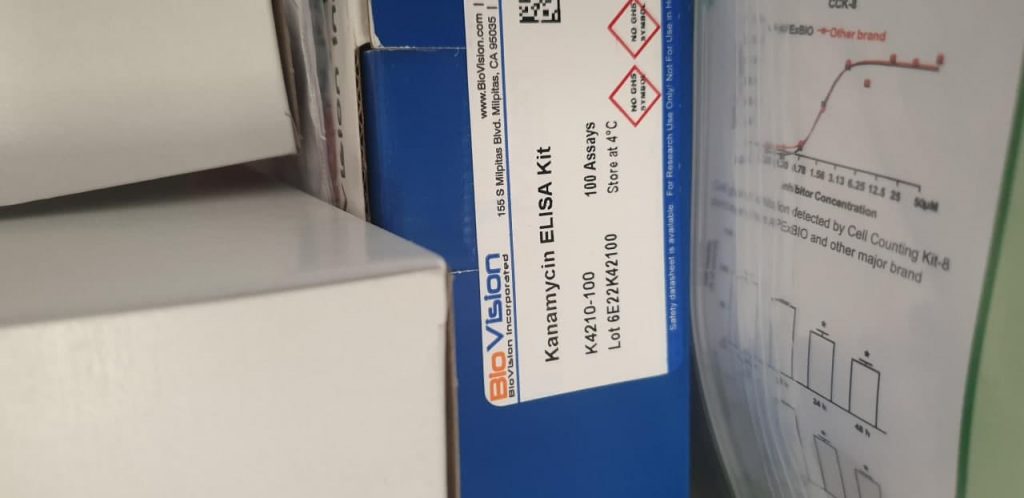Two novel isosteric conjugates of guanidiniocarbonyl-pyrrole and 6-bromo-TO (thiazole orange) had been ready, differing solely in linker connectivity to cyanine (benzothiazole nitrogen vs. quinoline nitrogen). The quinoline analog was considerably extra vulnerable to aggregation in an aqueous medium, which resulted in induced round dichroism (ICD; λ = 450-550 nm) recognition between A-T(U) and G-C basepair containing polynucleotides. The benzothiazole-isostere confirmed pronounced (four-fold) fluorimetric selectivity towards ds-RNA in comparability to any ds-DNA, at variance to its quinoline-analogue fluorescence being weakly selective to GC-DNA. Preliminary screening on human tumor and regular lung cell strains confirmed that each dyes very effectively enter residing cells and accumulate in mitochondria, inflicting reasonable cytotoxic results, and thus may very well be thought-about as lead compounds towards novel theragnostic mitochondrial dyes.
Ds-block parts have been gaining growing consideration in the sector of biomaterials modification, owing to their glorious organic properties, resembling antibiosis, osteogenesis, and so forth. However, their operate mechanisms should not effectively understood and conflicting conclusions had been drawn by earlier research on this concern, that are primarily resulted from the inconsistent experimental situations. In this work, three most generally used ds-block parts, copper, zinc, and silver had been launched on titanium substrate by plasma immersion ion implantation technique to analyze the rule of ds-block parts in the immune responses. Results confirmed that the implanted samples might lower the inflammatory responses in contrast with Ti pattern. The pattern of anti-inflammatory results of macrophages on samples was in correlation with mobile ROS ranges, which was induced by the implanted biomaterials and positively correlated with the variety of valence electrons of ds-block parts.
The co-culture experiments of macrophages and bone marrow mesenchymal stem cells confirmed that these two sorts of cells might improve the anti-inflammation and osteogenesis of samples by the paracrine method of PGE2. In basic, in their regular states on titanium substrate (Cu2+, Zn2+, Ag), the ds-block parts with extra valence electrons exhibit higher anti-inflammatory and osteogenic results. Moreover, molecular biology experiments point out that the PGE2-related signaling pathway might contribute to the specified immunoregulation and osteoinduction functionality of ds-block parts. These findings counsel a correlation between the variety of valence electrons of ds-block parts and the related organic responses, which supplies new perception into the collection of implanted ions and floor design of biomaterials.
[Value of CHA 2 DS 2-VASc score in predicting stroke recurrence in first-ever ischemic stroke survivors without atrial fibrillation]
To check the efficiency of CHA2DS2-VASc rating in predicting stroke recurrence in first-ever ischemic stroke survivors with out atrial fibrillation (AF). A complete of 768 sufferers had been included in this research, together with 475 male (61.85%) and 293 feminine sufferers (38.15%) with a imply age of 61.52±12.59 years (17-90 years). The baseline info of the sufferers was collected by face-to-face questionnaire survey and digital medical document evaluate, and their follow-up info was collected by phone follow-up as soon as each Three months. Chi-square check and Wilcoxon rank sum check had been used to match the baseline traits between the sufferers frequently adopted up and these withdrawn from the research. The space below the ROC curve (AUC), sensitivity, specificity, constructive chance ratio and different indicators of CHA2DS2-VASc rating had been decided, and C-index primarily based on Cox proportional hazards mannequin was used to guage the efficiency of CHA2DS2– VASc rating in predicting the chance of stroke recurrence in sufferers at completely different time factors throughout the follow-up.
The 1-year, 3-year, and 5-year recurrence price of stroke was 10.59%, 20.45%, and 29.46% in these sufferers, respectively. The AUC worth, Optimal Operating Point (OOP) and the corresponding constructive chance ratios (LR+) for predicting stroke recurrence had been 0.558 (95%CI: 0.492-0.624), 4.5, and 1.256 at 1 12 months; 0.574, 4.5, and 1.397 at Three years; and 0.604 (95%CI: 0.548-0.661), 4.5, and 1.655 at 5 years, respectively. Sensitivity evaluation of congestive coronary heart failure confirmed that the predictive impact of CHA2DS2-VASc rating was mainly unchanged. CHA2DS2-VASc rating can be utilized to foretell the 3-year and 5-year danger of stroke recurrence in first-ever ischemic stroke survivors with out AF. The rating has a higher prediction capability for long-term stroke recurrence, however the prediction worth stays low, suggesting the necessity to additional enhance the rating or set up a new rating for predicting stroke recurrence.

DS-7080a, a Selective Anti-ROBO4 Antibody, Shows Anti-Angiogenic Efficacy with Distinctly Different Profiles from Anti-VEGF Agents
Neovascular age-related macular degeneration (nAMD) outcomes from choroidal neovascularization (CNV) and causes extreme imaginative and prescient loss. Intravitreal anti-vascular endothelial progress issue (VEGF) therapies have considerably improved therapeutic outcomes; nevertheless, a substantial variety of sufferers expertise illness development. Roundabout 4 (ROBO4) has been reported to be a vascular-specific protein that stabilizes vasculature in ocular pathological angiogenesis. To discover ROBO4 concentrating on as a novel remedy in opposition to neovascularization, we generated a humanized anti-human ROBO4 antibody, DS-7080a, and evaluated its efficacy.
ROBO4 mRNA in human complete eye cross-sections was examined by in situ hybridization. Human umbilical vein endothelial cell (HUVEC) migration was measured in the presence of VEGF, primary fibroblast progress issue (bFGF), hepatocyte progress issue (HGF), or conditioned medium of main human retinal pigment epithelial (HRPE) cells. CNV was induced in cynomolgus monkeys by laser irradiation. Vascular leakage was measured by fluorescein angiography, and pathological modifications had been decided by histology.
[Linking template=”default” type=”products” search=”Branched Chain Amino Acid Assay Kit” header=”3″ limit=”156″ start=”2″ showCatalogNumber=”true” showSize=”true” showSupplier=”true” showPrice=”true” showDescription=”true” showAdditionalInformation=”true” showImage=”true” showSchemaMarkup=”true” imageWidth=”” imageHeight=””]
ROBO4 mRNA was detected in choroidal vessels of nAMD sufferers. DS-7080a suppressed HGF- or bFGF-induced HUVEC migration in addition to that induced by VEGF. Further, HUVEC migration induced by HRPE-conditioned medium was inhibited by both DS-7080a or ranibizumab in a comparable method, and the mixture of those confirmed additional inhibition. In a laser-induced CNV monkey mannequin, single intravitreous administration of 1.1 mg/eye of DS-7080a lowered the incidence of grade Four leakage from 44.45% in management eyes to 1.85% (P < 0.05 by Dunnett’s check). Anti-ROBO4 antibody DS-7080a suppressed HUVEC migration in a distinctly completely different style from anti-VEGF brokers and improved laser-induced CNV in non-human primates.

